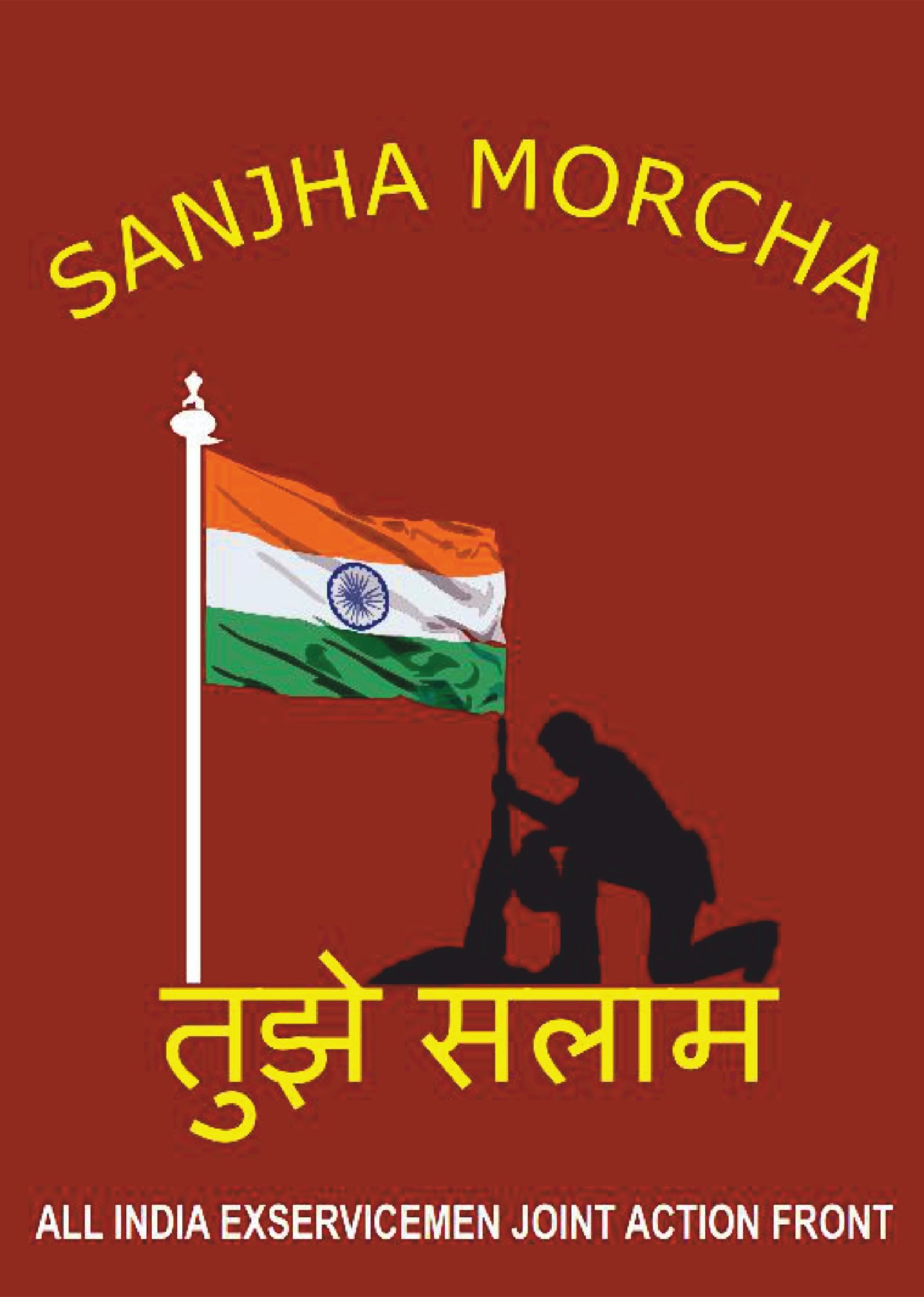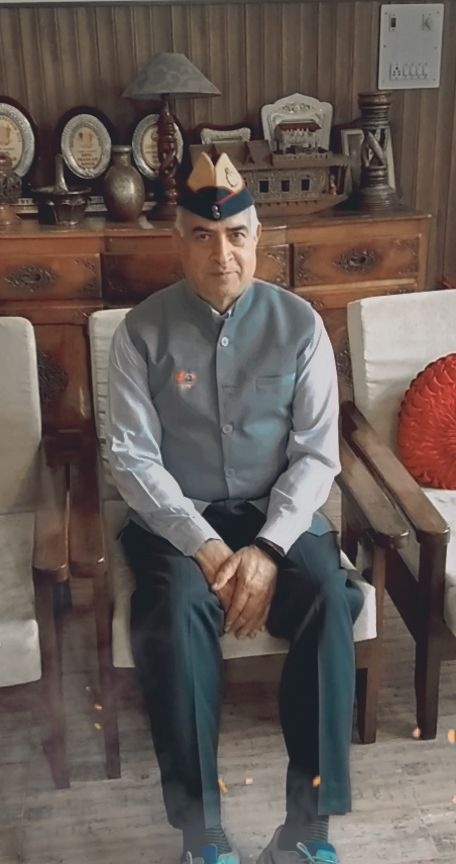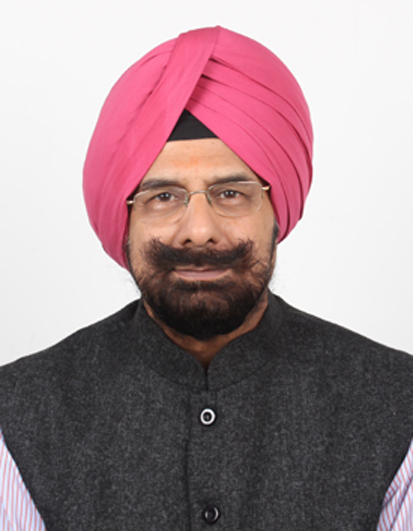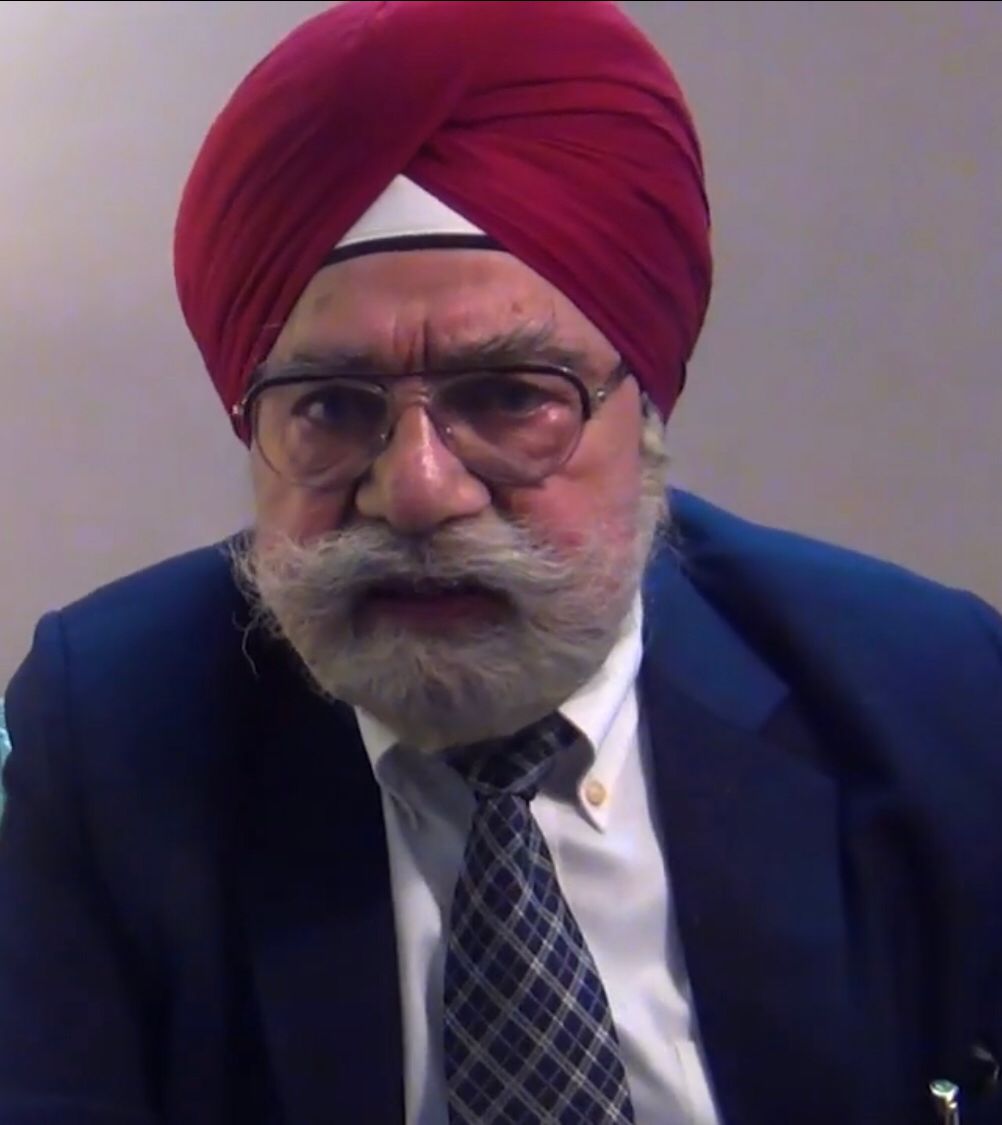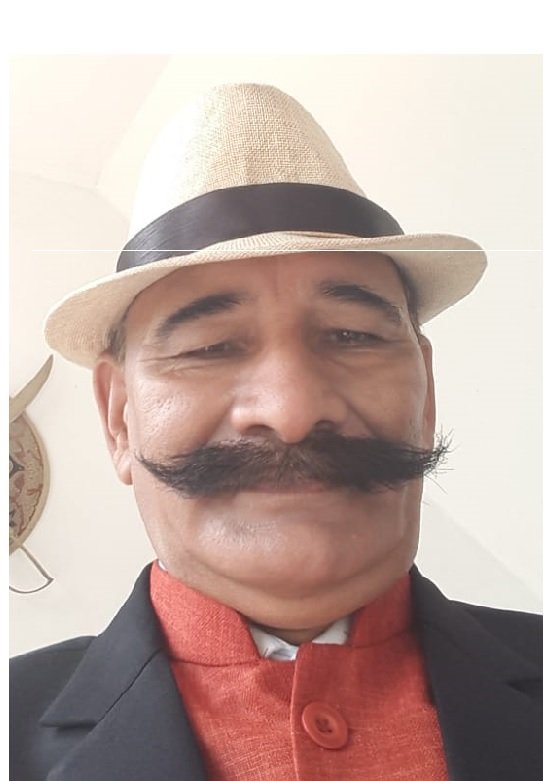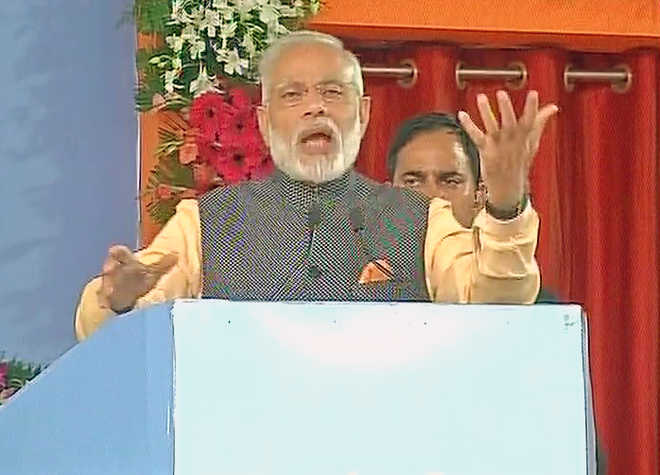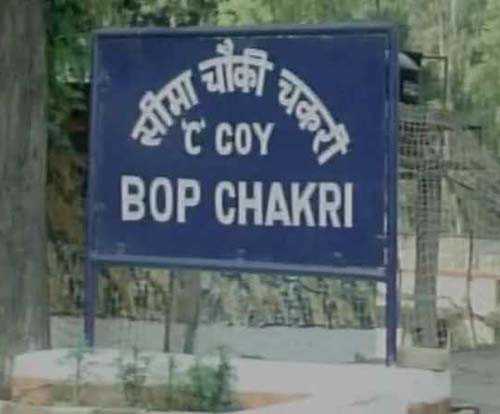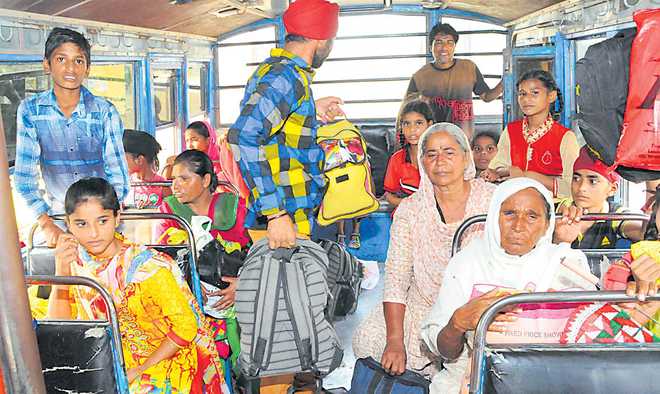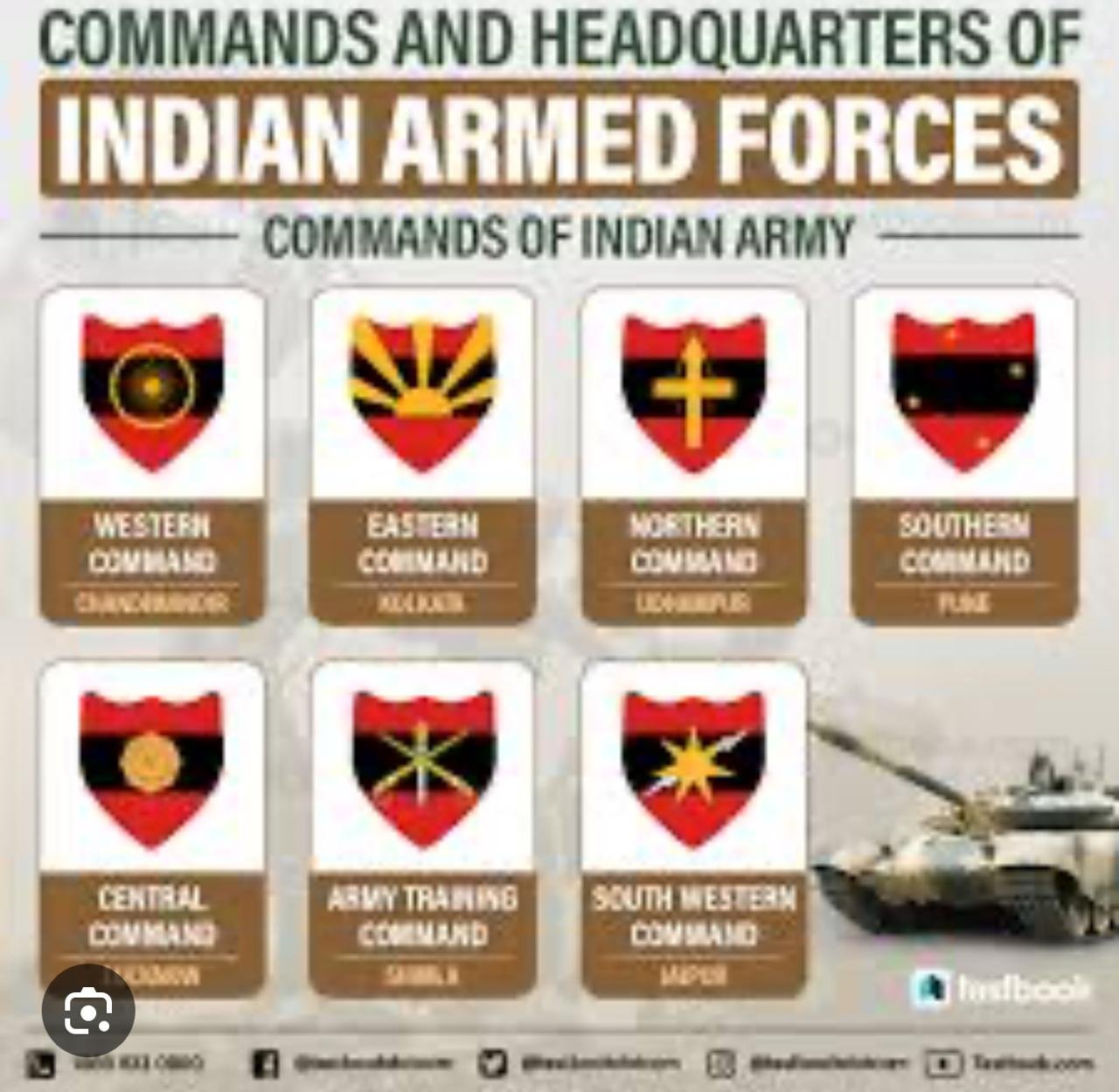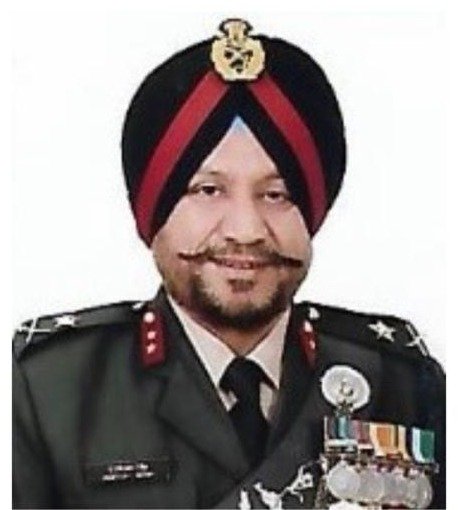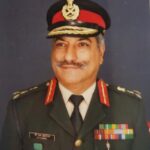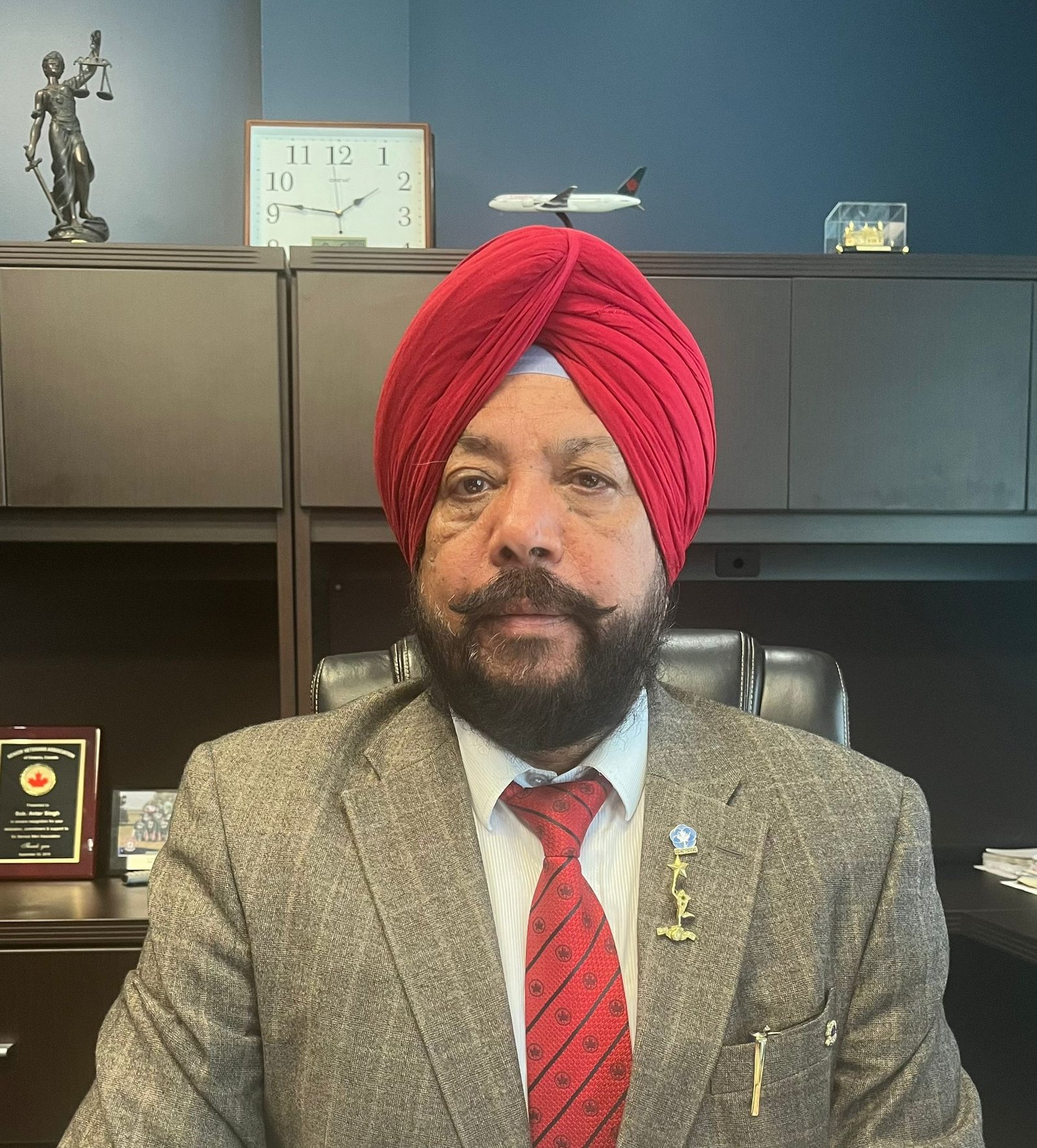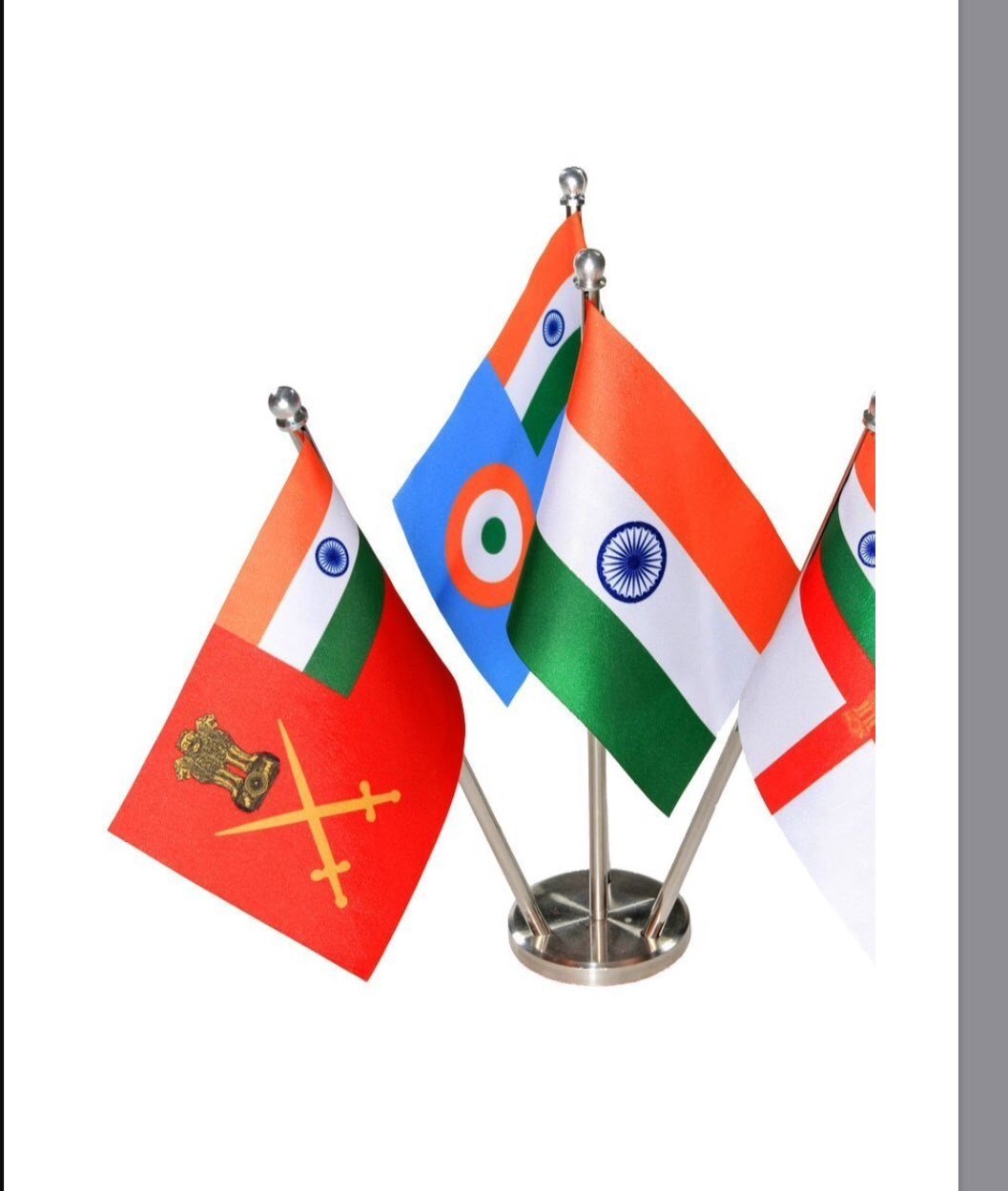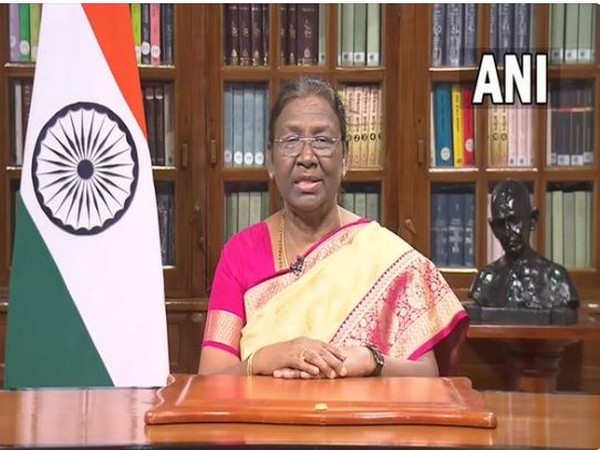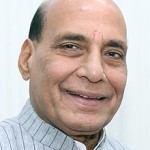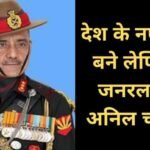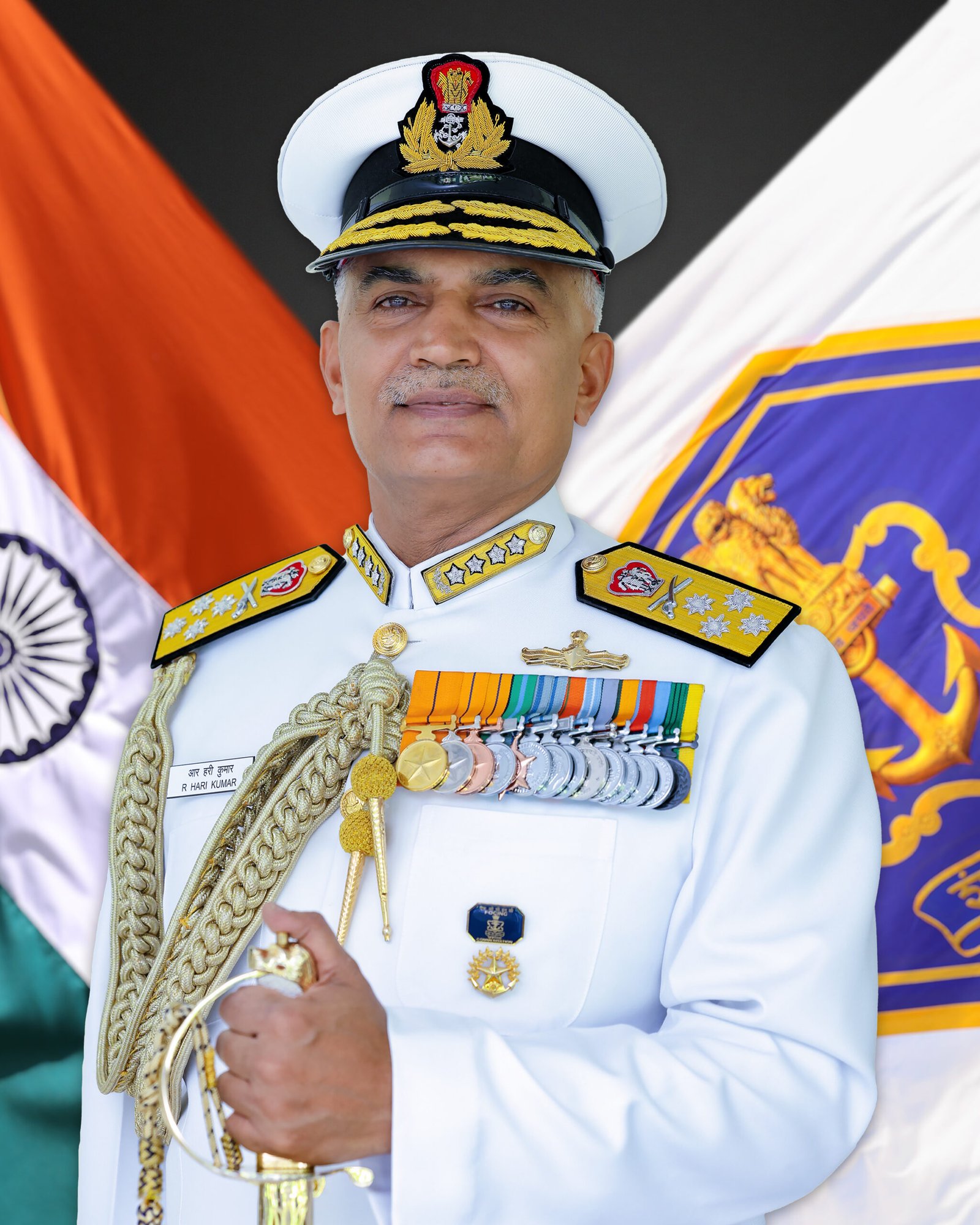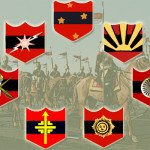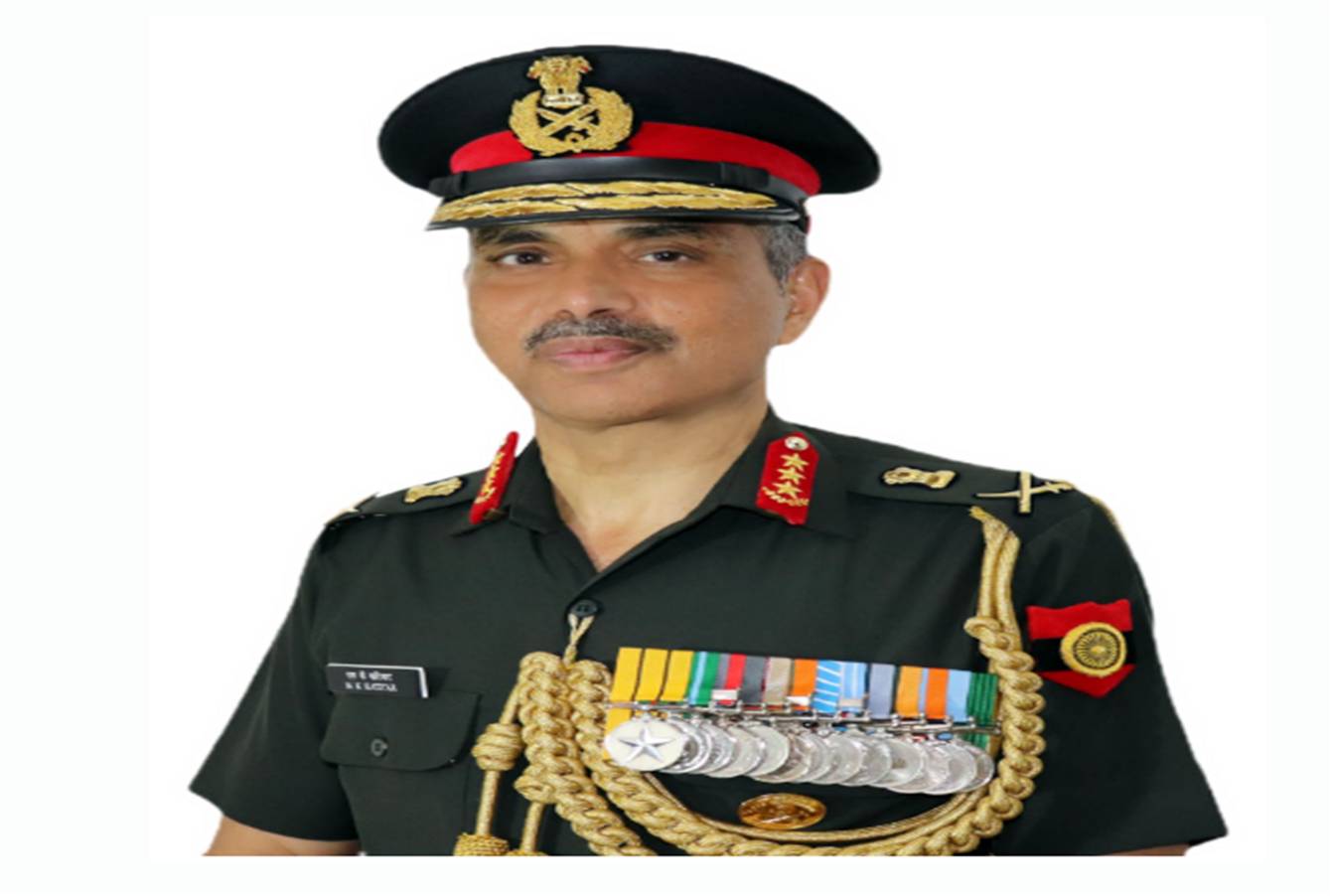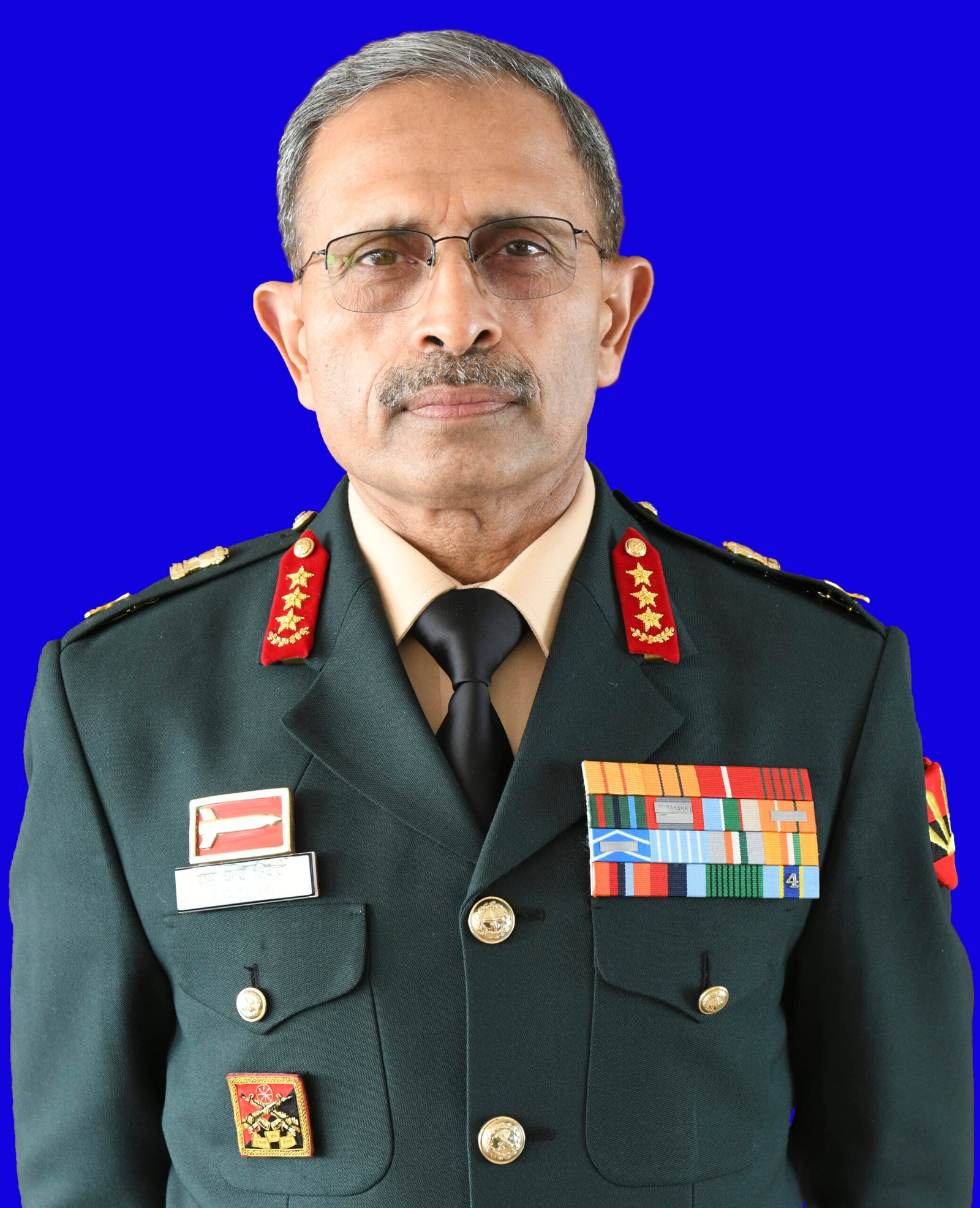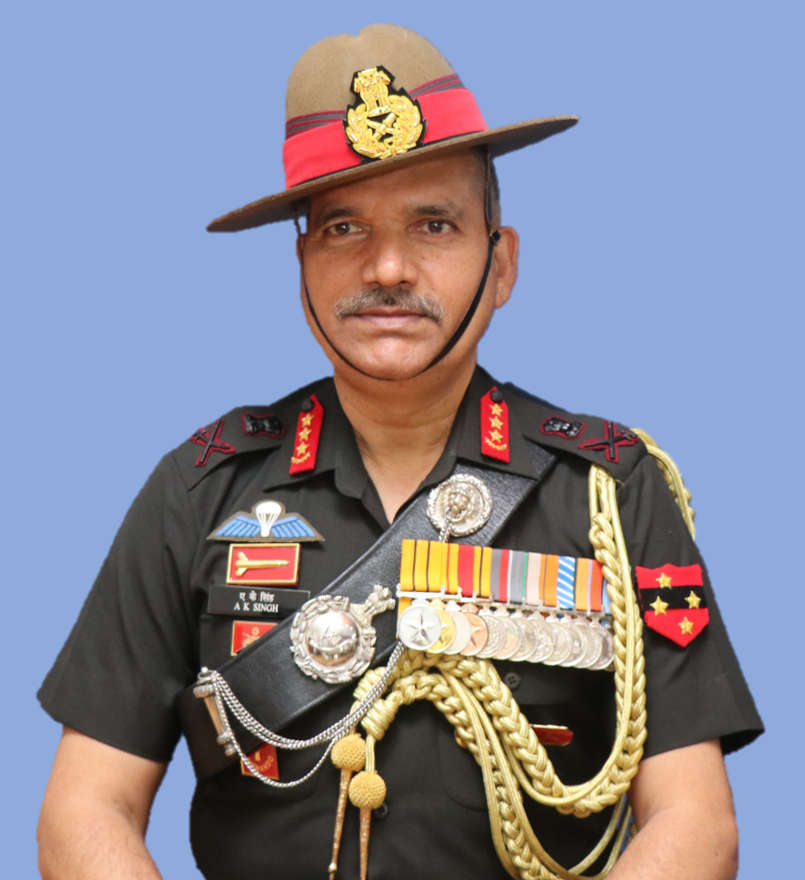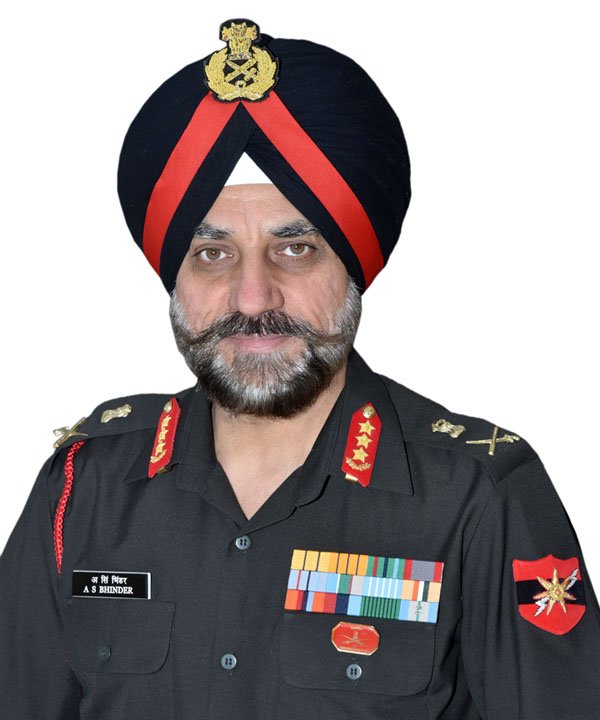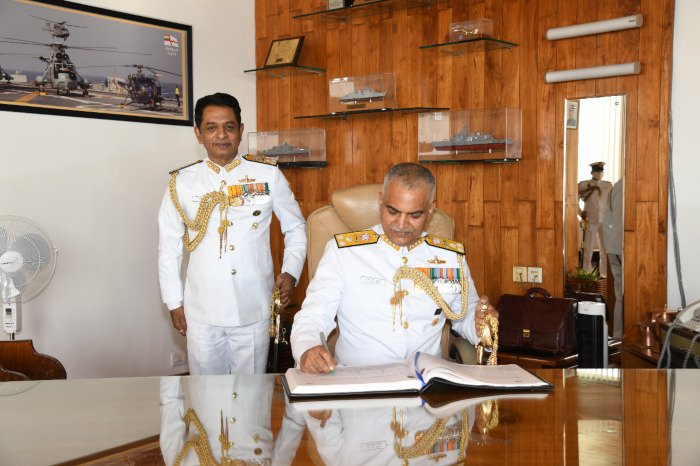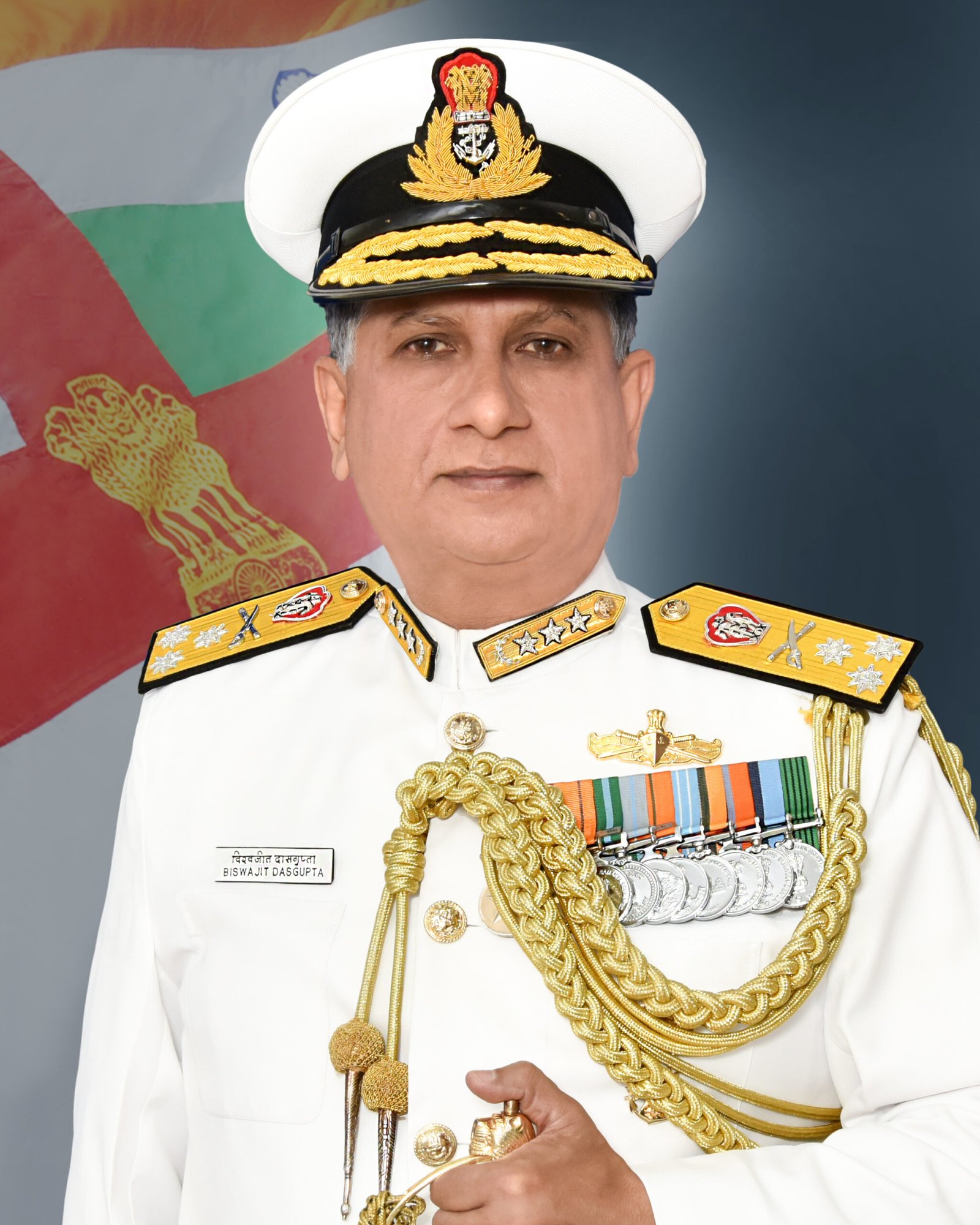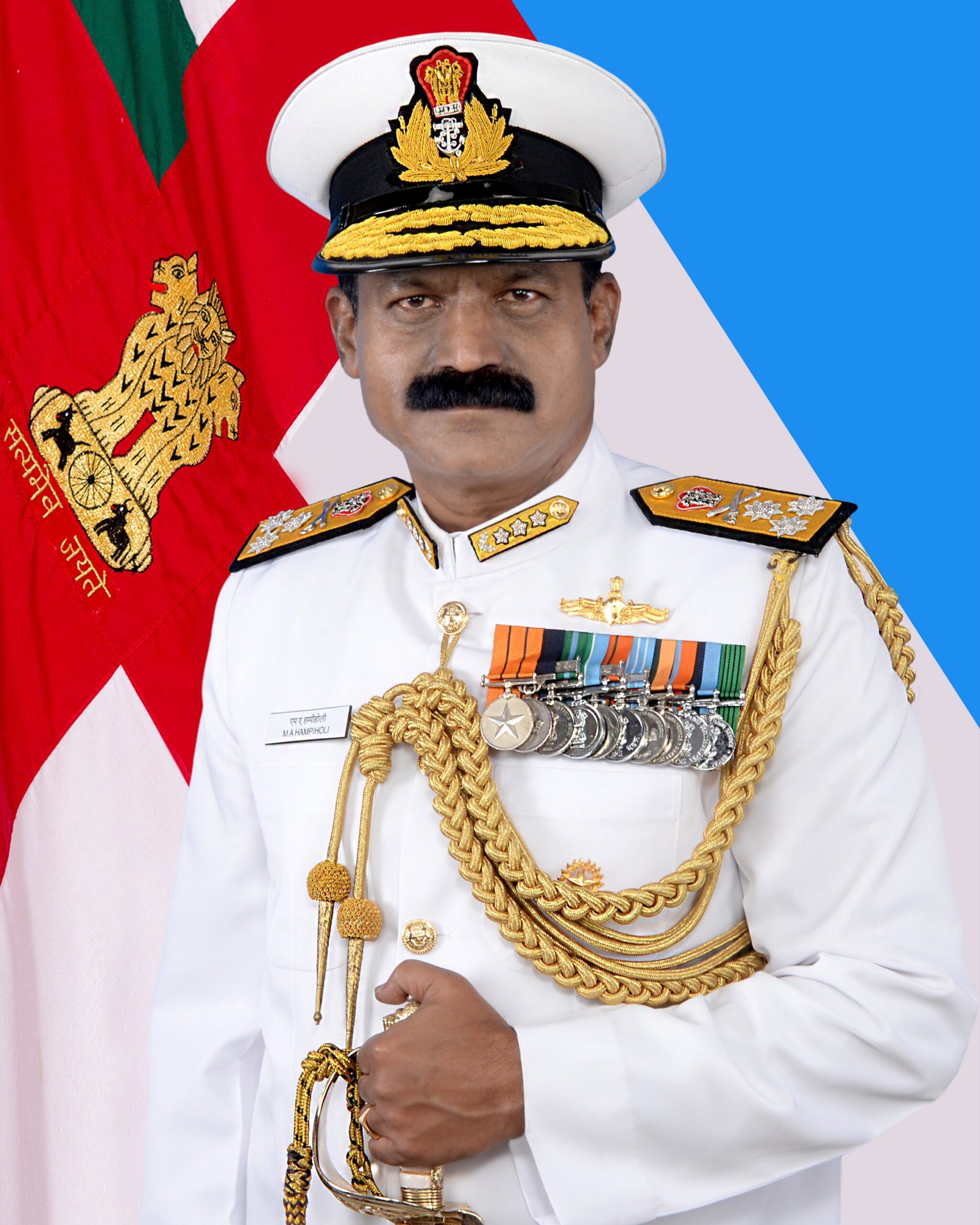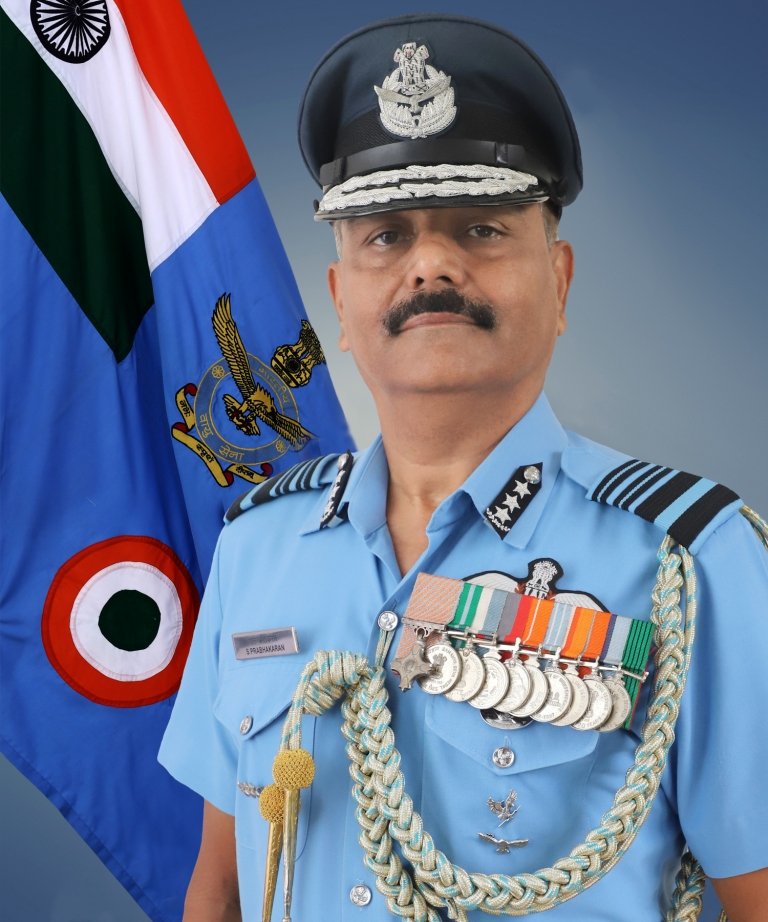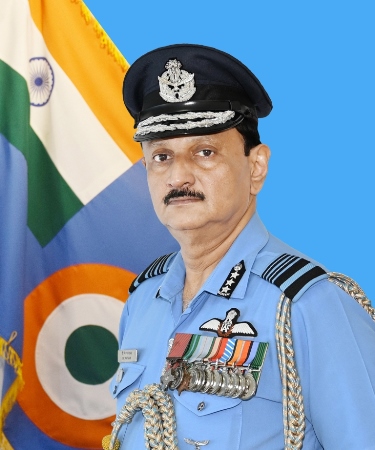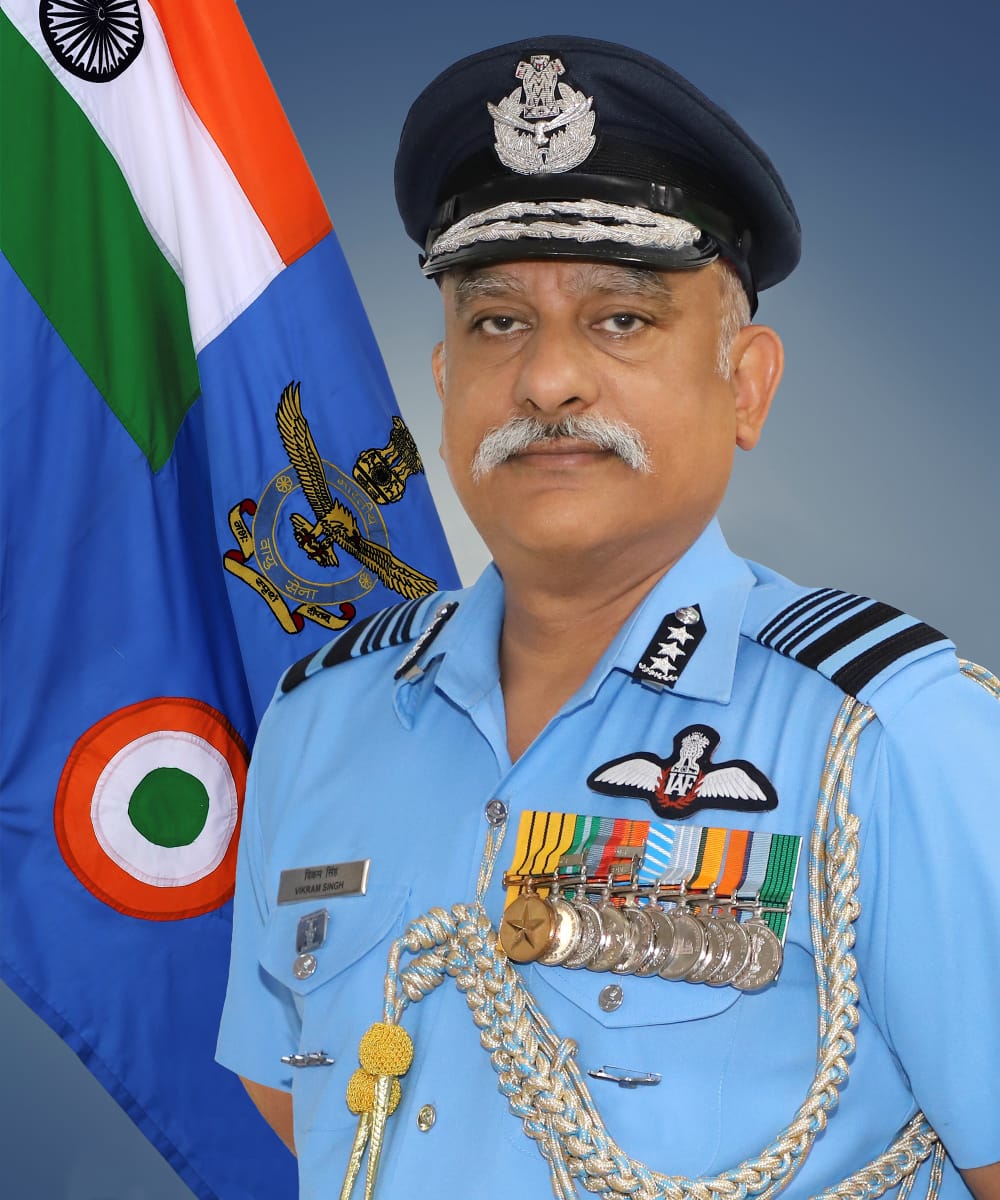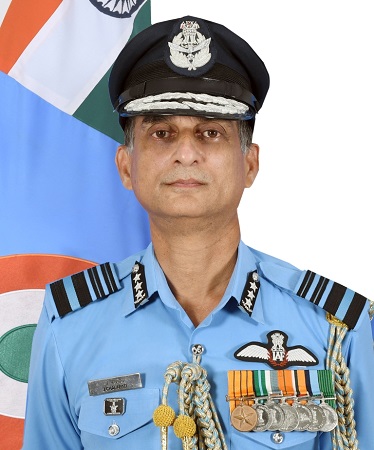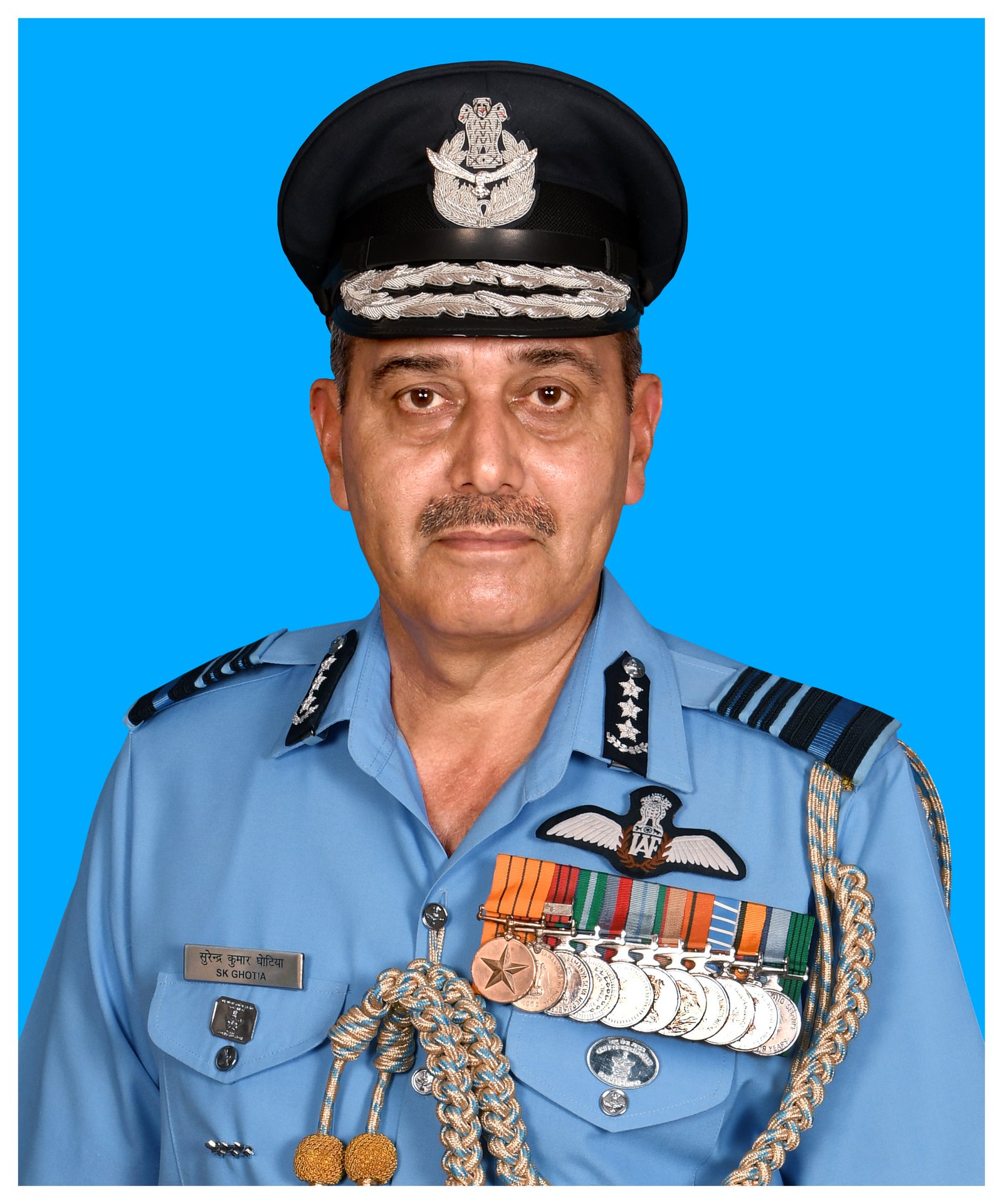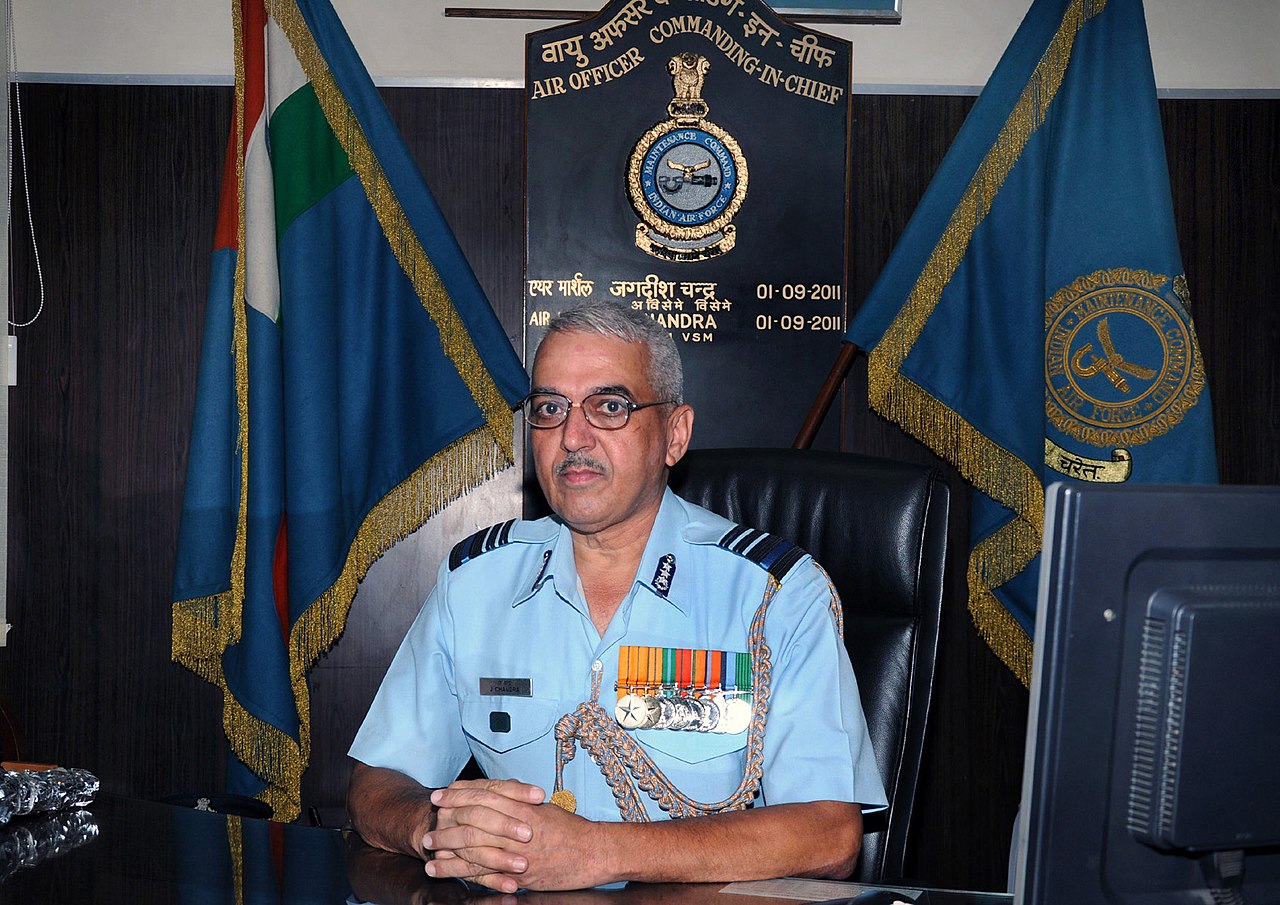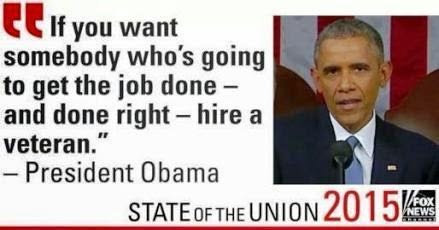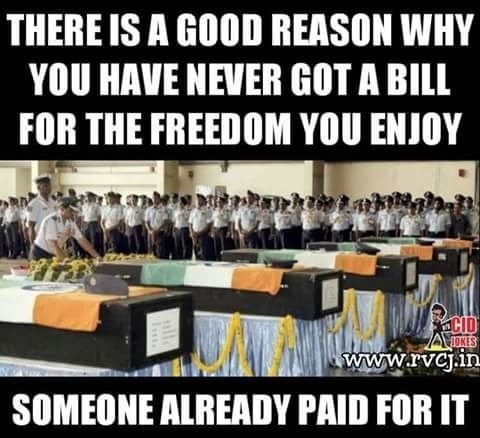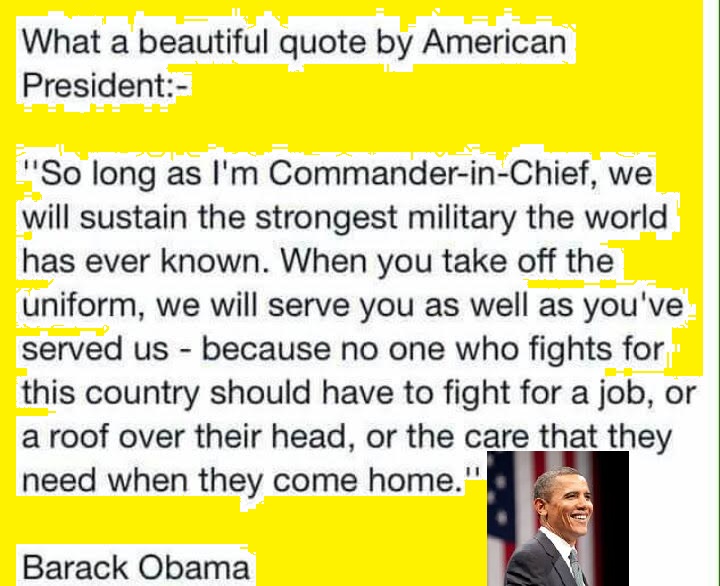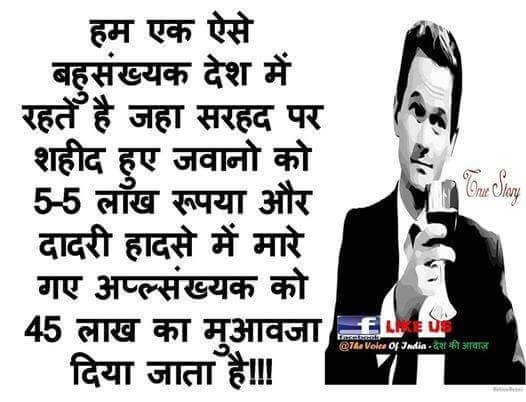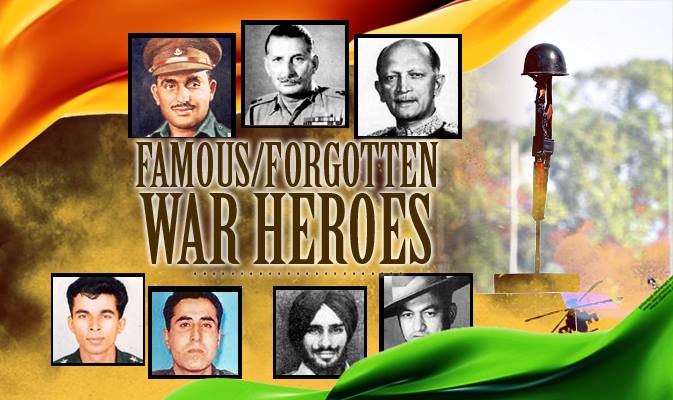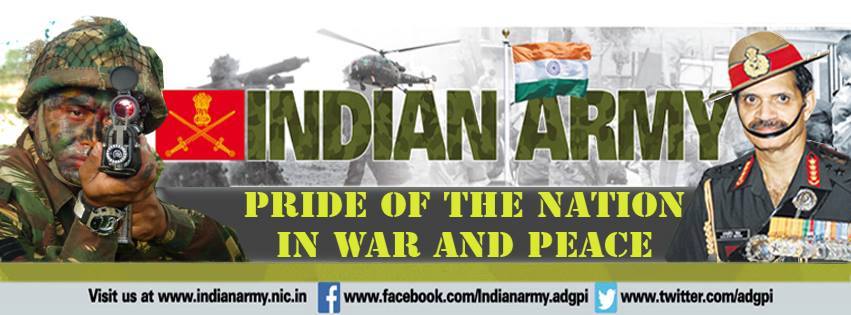

A 45m-tall steel sword at War Heroes Memorial in Amritsar. Vishal Kumar
Vijay Mohan
Tribune News Service
Amritsar, October 23
Helping visitors get a soldier’s perspective of the battlefield is the focal theme of the Punjab State War Heroes Memorial and Museum that was inaugurated in Amritsar today, conveying the message that if the call arises the sword should be unsheathed.The centerpiece of the memorial is a 45-metre-tall steel sword that emerges from a water body. “Water signifies purification of things and sword evolving from it denotes that it is only to be used for righteous action and protection of the distressed and not for any evil purpose,” Rakesh Kapoor, whose Delhi-based architecture firm designed the memorial, said.“The underlying theme is that we are pure at heart but ready to pick up arms if need be. The sword also represents the spirit of Punjab, which has borne the brunt of foreign invasions over centuries,” he added.At the base of the sword are four lions facing the four cardinal directions, which depict strength and alertness. “The expression of the lions has purposely been kept neutral so that they can reflect the visitor’s own thoughts and the viewer can develop a notional relationship with them,” he said. The lions also represent India’s national emblem and the visitor can also relate them with the nation as a whole.Motivation is an important aspect of the museum and a gallery is devoted to this theme. A lot of planning also went into giving visitors a realistic feeling of war zones.A cafeteria in the complex has been designed to look like a bunker while some other areas have a distinct military ambience where visitors can walk back in
Stand up and salute defence personnel: Badal to DCs, SSPs
Announces ex-servicemen helpline at war memorial opening
Vijay Mohan
Tribune News Service
Amritsar, October 23
Asking Deputy Commissioners and Senior Superintendents of Police in the state to accord due recognition and respect to defence personnel and veterans, Punjab Chief Minister Parkash Singh Badal today directed them to stand up and salute them whenever they visited their offices.Addressing a vast gathering of ex-servicemen and civilian dignitaries after inaugurating the Punjab State War Heroes’ Memorial and Museum here, he said the administration should never be complacent on this account as defence personnel and ex-servicemen constituted one of the most revered sections of society. He also announced a tele-helpline at the Secretariat to redress grievances of ex-servicemen.(Follow The Tribune on Facebook; and Twitter @thetribunechd)Patting the Narendra Modi government and the Army for the cross-LoC surgical strikes by terming these the “right decision at the right time”, Badal said a country without a strong and effective military was a hollow nation. “History has shown that countries that have had a good military leadership have always been strong. Alexander the Great and Maharaja Ranjit Singh are examples of this,” he said.Deputy Chief Minister, Sukhbir Singh Badal and Union Minister Vijay Sampala also complimented the government for the surgical strikes. Sukhbir said the intake into the armed forces from Punjab, which had witnessed a decline, had picked up. “Only four cadets from Punjab had joined the National Defence Academy five years ago. The figure is now 20,” he said.Sukhbir said contrary to perception, there was no mass drug abuse by the youth in the state. “Medical tests at an Army rally revealed that only 1.26 per cent of the aspirants tested positive for narcotics, which was about half the national average,” he said.Others present were former Army Chiefs Gen JJ Singh and Gen Deepak Kapoor and former Air Chief, Air Chief Marshal SK Sareen, various Cabinet ministers, Commonwealth War Graves Commission secretary Richard Hill and WW-II veteran Col Thomas Conway.
COMMENTS
LAST MINUTE LARGESS FOR DEFENCE PERSONNEL’S in his Last 4 Months Rule

Pretty Shameful.
The decorated Solider Birig Chandpuri MVC ,VSM a living legend standing behind Dy CM And a minister not in first Row. What help it can provide when IZZAT not granted to a Decorated Solider at War Memorial.
HELPLINE
- More than 9 years of Rule less than 4 months left there was no helpline now at fag end the govt announces HELPLINE making fool of veterans.
- badal orders DC and Police officers to salute the Defence personnels but himself not recognising Brig Kuldeep Chandpuri a Decorated and living Legend of 1965 war backseat.

